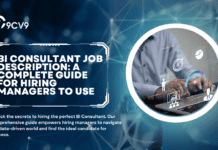Key Takeaways
- Discover the most effective compensation management software in 2025, tailored to streamline payroll, performance, and pay equity management.
- Learn about key features, pricing models, and user ratings to choose the best solution for your organization’s needs.
- Explore solutions with advanced AI, integration capabilities, and real-time analytics for enhanced compensation strategy management.
In the ever-evolving landscape of modern business, attracting and retaining top talent has never been more crucial. As organizations strive to remain competitive, providing competitive compensation packages is one of the most effective ways to drive employee satisfaction, engagement, and performance. However, managing compensation, especially in large organizations with diverse roles and global workforces, presents a complex challenge. From salary structures to bonuses, benefits, equity, and performance incentives, compensation management has become a multi-faceted task requiring precision, compliance, and strategic alignment with business objectives.

This is where compensation management software comes into play. These innovative tools have revolutionized how businesses approach compensation planning and administration by offering streamlined, data-driven solutions that improve efficiency, accuracy, and transparency. In 2025, the market for compensation management software is more robust than ever, with a host of options designed to cater to businesses of all sizes and industries. Whether you are looking to optimize your pay structures, ensure equity, or create performance-based incentive models, these platforms offer a comprehensive suite of features to help HR teams and business leaders make informed decisions and implement fair and effective compensation strategies.
As compensation management continues to grow in complexity, selecting the right software solution has become critical for organizations aiming to stay ahead in a competitive labor market. This in-depth report highlights the Top 10 Best Compensation Management Software in 2025, carefully selected based on their performance, features, user experience, and market impact. In this guide, we will explore key factors that contribute to the success of compensation software, including user-friendly interfaces, flexibility, integration capabilities, and robust analytics. We will also provide insights into the specific strengths and weaknesses of each platform to help businesses make the best choice for their unique needs.
In this comprehensive analysis, we cover a wide range of solutions that cater to different business scales—from startups looking for cost-effective options to large enterprises requiring customizable, scalable tools. You will gain an understanding of how compensation management software can help your organization not only manage compensation more efficiently but also drive employee satisfaction, enhance retention, and optimize overall financial planning. With the right tools in place, organizations can ensure their compensation strategies are fair, transparent, and aligned with their long-term goals.
As we move into the future, compensation management software is no longer just a back-office function but a key driver of business success. With the 2025 landscape promising a stronger focus on AI-driven decision-making, real-time data analysis, and personalized compensation models, the next generation of tools will bring even more advanced features that integrate seamlessly with broader HR, payroll, and financial systems. This report will provide an essential roadmap for business leaders and HR professionals looking to adopt cutting-edge solutions that deliver value and improve their overall compensation strategy.
By the end of this article, you’ll be equipped with the knowledge to evaluate the best compensation management software available today, helping your organization optimize its compensation processes and stay competitive in the evolving job market.
Before we venture further into this article, we would like to share who we are and what we do.
About 9cv9
9cv9 is a business tech startup based in Singapore and Asia, with a strong presence all over the world.
With over nine years of startup and business experience, and being highly involved in connecting with thousands of companies and startups, the 9cv9 team has listed some important learning points in this overview of the Top 10 Best Compensation Management Software.
If your company needs recruitment and headhunting services to hire top-quality employees, you can use 9cv9 headhunting and recruitment services to hire top talents and candidates. Find out more here, or send over an email to [email protected].
Or just post 1 free job posting here at 9cv9 Hiring Portal in under 10 minutes.
Top 10 Best Compensation Management Software
- Compport
- Pave
- Beqom
- HRSoft
- Payfactors (Payscale)
- Aeqium
- Paylocity
- CaptivateIQ
- Xactly
- SAP SuccessFactors HCM
1. Compport

Compport is an advanced Software-as-a-Service (SaaS) solution specifically crafted to optimize and streamline the management of a wide range of compensation plans. Whether dealing with annual salary reviews, incentive schemes, or complex reward programs, Compport provides a highly flexible and personalized platform designed for organizations of all sizes. Known for its powerful features and an intuitive user interface, Compport ensures that compensation management remains both efficient and transparent.
Key Features and Benefits
- Comprehensive Compensation Planning:
- Compport excels in managing multifaceted compensation strategies, including annual salary reviews, incentive schemes, and rewards programs. The platform provides customizable templates and extensive configurations to match the needs of large organizations.
- The rule engine allows companies to automate pay structures based on multiple parameters such as roles, functions, levels, locations, and tenure, offering unparalleled flexibility.
- User-Friendly Interface:
- One of Compport’s standout features is its intuitive interface, which simplifies the creation and management of complex compensation plans. Users appreciate the platform’s seamless navigation, reducing the learning curve for HR professionals.
- The one-click budget builder allows managers to quickly set up and adjust compensation plans with ease.
- Advanced Personalization and Control:
- Built with scalability in mind, Compport supports compensation management for global organizations. It ensures that compensation plans can be adapted to meet local requirements while maintaining consistency across different regions.
- Personalization is at the core of the platform, offering granular control over compensation decisions based on an employee’s function, location, and role within the company.
- Real-Time Pay Equity Management:
- With a strong focus on data-driven insights, Compport allows organizations to manage pay equity effectively. The platform provides benchmarking data and automated alerts to flag pay inequities in real-time, helping organizations maintain fairness and compliance.
- Users can access insights into global compensation trends, ensuring that pay scales align with industry standards and reducing the risk of pay discrepancies.
- Budget Simulations and Scenario Evaluation:
- Compport allows for quick budget simulations by testing multiple compensation scenarios. This enables HR teams to evaluate different compensation strategies, assess the impact of changes, and make informed decisions to optimize budgets and pay structures.
Why Compport Ranks Among the Top 10 Compensation Management Software in 2025
- Versatility for Large Organizations:
- Compport stands out as a top choice for businesses with complex global operations. It is particularly effective for organizations ranging from 300 to 50,000 employees, making it ideal for mid-market to enterprise-level companies.
- While smaller businesses (with fewer than 50 employees) may find the platform’s extensive features overwhelming, it is perfectly suited for larger businesses that need advanced tools for compensation planning.
- Industry Recognition:
- With an impressive G2 rating of 4.7/5 and strong user endorsements, Compport has garnered trust across a diverse range of industries. Over 200 companies currently use the software, supporting more than 1 million employees globally.
- Though it has a TrustRadius rating of 5/10, user feedback on platforms like G2 emphasizes its ease of use and seamless implementation process.
- Integration Capabilities:
- Compport integrates smoothly with leading Human Resource Information Systems (HRIS) and Human Capital Management (HCM) solutions such as Workday and SAP SuccessFactors, ensuring a seamless flow of data across HR and payroll systems.
Pricing Structure
- Tiered Pricing Model:
- Pricing for Compport is based on a tiered structure that takes into account the number of users and the geographical spread of employees. This pricing flexibility allows companies to scale their investment in compensation management software according to their needs.
Compport at a Glance
| Feature | Description |
|---|---|
| Compensation Management | Supports salary reviews, incentive schemes, rewards programs. |
| User Interface | Intuitive and easy-to-use design for streamlined compensation planning. |
| Real-Time Pay Equity | Automated alerts and benchmarking for pay equity management. |
| Budget Simulations | Quick scenario testing to evaluate compensation adjustments. |
| Integration | Seamlessly integrates with Workday, SAP SuccessFactors, and more. |
| Global Scalability | Ideal for organizations with 300+ employees and international teams. |
Conclusion
Compport’s comprehensive suite of features and its user-centric design make it one of the best compensation management software solutions available in 2025. The platform’s ability to manage complex compensation structures, combined with its deep customization options and real-time pay equity management, positions it as an invaluable tool for large and growing global organizations. Although it may not be suitable for small businesses with fewer than 50 employees, its flexibility and scalability make it a top choice for medium to large enterprises.
For organizations aiming to optimize their compensation processes and ensure equity, fairness, and efficiency, Compport offers the powerful features and tools necessary to manage compensation in a strategic and informed manner.
2. Pave

Pave emerges as a premier end-to-end compensation management software in 2025, distinguished by its unwavering commitment to real-time data transparency, agile workflows, and responsible pay practices. Designed to support high-growth organizations and enterprises aiming to build equitable and competitive compensation strategies, Pave’s platform leverages robust data analytics and intuitive functionality to streamline merit cycles, enhance approval processes, and ensure organizations maintain pay equity at scale.
Its widespread adoption across industries, superior user satisfaction ratings, and rich integration ecosystem position Pave among the top 10 best compensation management software platforms in 2025.
Key Features and Strategic Advantages
1. Real-Time Compensation Benchmarking and Pay Transparency
- Live Market Benchmarking:
- Pave is built around access to one of the largest and most dynamic compensation datasets in the industry.
- Provides real-time market compensation insights drawn from a network of over 8,500 participating companies, encompassing more than 1 million employee records.
- Pay Equity and Transparency Focus:
- Helps companies foster a culture of open and equitable pay by visualizing how salaries compare within roles, across levels, and between peer organizations.
- Offers advanced tools for pay gap analysis, enabling employers to proactively address potential disparities in compensation.
2. Streamlined Merit Cycle Management
- Workflow Automation for Merit Reviews:
- Pave’s strength lies in simplifying merit cycle processes through streamlined workflows and automated approval structures.
- HR teams can configure workflows to reflect organizational hierarchies, enabling efficient, rule-based compensation decision-making during salary reviews and promotions.
- Collaborative Budgeting Tools:
- Facilitates agile planning and collaborative budget allocation by allowing managers and HR leaders to access compensation budgets, team data, and performance metrics in a centralized dashboard.
3. Advanced Visualization and Data Reporting
- Intelligent Data Dashboards:
- Users gain access to intuitive, self-service analytics dashboards that display compensation metrics, equity data, and headcount trends.
- Visualization tools assist in understanding where compensation stands relative to the market and internal equity bands.
- Scenario Modeling:
- HR leaders can simulate different compensation strategies using scenario modeling tools that allow testing of multiple budgetary and pay distribution models.
4. Seamless Integration Ecosystem
- Plug-and-Play Compatibility:
- Pave integrates with leading Human Resource Information Systems (HRIS) and Applicant Tracking Systems (ATS) to enable synchronized data management.
- Key integrations include:
- Workday
- ADP
- BambooHR
- Greenhouse
- Lever
- Data-Driven Synchronization:
- Real-time syncing ensures that compensation plans align with employee data, hiring forecasts, and organizational changes.
Why Pave Is Among the Top 10 Compensation Management Platforms in 2025
| Evaluation Metric | Pave’s Performance |
|---|---|
| G2 Rating | 4.7/5 — based on verified user reviews |
| Gartner Peer Insights | 4.8/5 — praised for innovation, usability, and customer support |
| Global Adoption | Trusted by over 8,500 companies managing 1M+ employee records |
| Unique Selling Proposition | Real-time compensation benchmarking + agile merit cycle workflows |
| Pay Transparency Tools | Visual compensation comparisons, equity gap detection |
| Workflow Automation | Structured approval flows and budgeting tools |
| Integration Flexibility | Broad HRIS and ATS compatibility with real-time data sync |
| Self-Service Usability | Designed for HR professionals, managers, and executives alike |
Pricing Model Overview
Pave offers modular pricing tiers to accommodate businesses of different sizes and data needs:
| Plan | Features Included | Ideal For |
|---|---|---|
| Free Benchmarking | Access to basic compensation benchmarking | Startups and small teams |
| Premium Data | Advanced benchmarking with custom filters and insights | Mid-market companies |
| Workflows Suite | Full merit cycle management, approval chains, and budgeting tools | Enterprises and scaling firms |
Conclusion
Pave’s strategic integration of real-time compensation benchmarking, seamless merit cycle workflows, and intelligent data visualization establishes it as one of the most advanced and impactful compensation management solutions in 2025. Its data-first philosophy empowers organizations to not only pay competitively but also to do so responsibly, fostering a culture of fairness and transparency across the enterprise.
The platform’s exceptional ratings on G2 (4.7/5) and Gartner Peer Insights (4.8/5), along with its expansive user base and continuous innovation, make it a definitive leader in the compensation tech landscape. Companies focused on equitable compensation, streamlined merit reviews, and HR-tech integration at scale will find Pave to be an indispensable asset in their compensation strategy toolkit.
3. Beqom

Beqom stands as a leading enterprise-grade compensation management software in 2025, specifically engineered to support complex and customized compensation strategies across diverse industries. This platform offers an all-in-one, end-to-end solution for managing salaries, bonuses, long-term incentives, and pay equity initiatives on a global scale. Designed to empower large organizations with agile compensation tools, AI-powered pay intelligence, and seamless HRIS integration, Beqom has solidified its position as one of the Top 10 Compensation Management Software platforms of the year.
Used in over 160 countries and trusted by more than 400 enterprises, Beqom enables companies to align compensation with performance, market trends, and strategic goals while ensuring regulatory compliance and internal fairness.
Key Features and Functional Capabilities
1. End-to-End Compensation Management
- Multi-Component Pay Administration:
- Manages all types of compensation elements including:
- Base Salary
- Short-Term Incentives (STIs)
- Long-Term Incentives (LTIs)
- Equity Compensation
- Allows for the seamless administration of variable compensation structures, tailored to the unique frameworks of each organization.
- Manages all types of compensation elements including:
- Custom Plan Configuration:
- Beqom’s architecture supports dynamic plan modeling, ensuring compensation schemes can evolve with corporate strategy and market demands.
- Enables creation of differentiated plans based on role, geography, business unit, and individual performance.
2. Advanced Flexibility for Complex Structures
- Enterprise-Grade Scalability:
- Designed for global organizations with diverse compensation structures and large-scale workforces.
- Supports data modeling for tens of thousands of employees across multiple countries and currencies.
- Data-Driven Decision-Making:
- Enables organizations to analyze historical data, model future outcomes, and drive strategic decisions backed by analytics.
- Offers centralized access to multi-layered compensation data with granular control at each level of the organization.
3. AI-Powered Pay Intelligence and Equity Tools
- Artificial Intelligence for Fair Pay:
- Leverages AI algorithms to identify and address pay disparities, enhancing transparency, compliance, and internal trust.
- Delivers real-time alerts and recommendations for resolving pay equity issues.
- Pay Transparency & Governance:
- Enables businesses to meet global regulatory expectations and internal governance standards for equitable compensation frameworks.
4. Seamless Integrations and Ecosystem Compatibility
- Pre-Built Integrations:
- Easily integrates with popular HRIS and HCM platforms, including:
- Workday
- SAP SuccessFactors
- Oracle HCM
- Facilitates a bi-directional data flow, ensuring real-time synchronization of employee data, payroll, and performance metrics.
- Easily integrates with popular HRIS and HCM platforms, including:
- Modular Deployment:
- Organizations can adopt specific modules or deploy the full platform depending on maturity and compensation needs.
Why Beqom Ranks Among the Top 10 Compensation Management Solutions in 2025
| Evaluation Criteria | Beqom Performance Summary |
|---|---|
| Platform Flexibility | Highly adaptable to unique business needs, with multi-plan, multi-country support |
| G2 Rating | 4.3/5 – praised for flexibility and ability to manage large volumes of compensation data |
| Customer Base | 400+ enterprises across more than 160 countries |
| Compensation Elements Supported | Salary, bonuses, long-term incentives, equity compensation |
| Pay Equity Focus | AI-driven intelligence to detect and correct pay disparities |
| Scalability | Suitable for complex, global enterprises with 1,000+ employees |
| HRIS Integration | Workday, SAP SuccessFactors, Oracle, and other major systems |
| Ideal Use Case | Large enterprises requiring a robust, customizable, and equitable compensation strategy |
Platform Overview at a Glance
| Feature Category | Description |
|---|---|
| Compensation Elements | Base salary, variable bonuses, long-term incentives, equity plans |
| AI Capabilities | Predictive pay analysis, equity gap detection, data-driven compensation models |
| Global Functionality | Multi-currency, multilingual, regional compliance support |
| Integration Options | Workday, SAP, Oracle, ADP, and more |
| Governance & Compliance | Pay transparency tools, audit trails, real-time alerts |
Pricing Information
Beqom offers predictable and scalable pricing structures, tailored to enterprise needs. Pricing is available:
- Upon custom demo request
- Based on factors such as:
- Number of users
- Compensation components required
- Level of system integration
- Geographic deployment scope
Conclusion
Beqom exemplifies what modern enterprises require from a next-generation compensation management platform: scalability, flexibility, and intelligent insights. Its ability to administer complex compensation plans across global organizations, combined with a strong emphasis on pay equity and AI-powered analytics, distinguishes Beqom as a premium choice in 2025.
For enterprises operating in highly regulated or rapidly evolving markets, Beqom provides the critical infrastructure needed to deliver strategic, fair, and competitive compensation at scale. Its proven track record, powerful integrations, and AI-driven decision-making tools make it an indispensable platform for forward-thinking HR and compensation leaders.
4. HRSoft

In the evolving landscape of total rewards and strategic compensation planning, HRSoft has distinguished itself in 2025 as a high-impact, industry-tailored compensation management solution. Purpose-built to address the full compensation lifecycle, HRSoft enables organizations—particularly in healthcare, finance, and retail—to achieve pay-for-performance alignment, maintain internal pay equity, and drive operational efficiency in compensation workflows. Its enterprise-grade capabilities, paired with flexible integrations and real-time analytics, solidify HRSoft’s position among the Top 10 Best Compensation Management Software platforms in 2025.
Comprehensive Compensation Lifecycle Coverage
1. End-to-End Compensation Planning Capabilities
- Strategic Budget Modeling:
- Enables HR and finance leaders to simulate budget impacts before allocation.
- Supports complex budgeting across business units, regions, and pay bands.
- Award Allocation & Plan Execution:
- Facilitates precise distribution of merit increases, bonuses, and incentives.
- Automates compensation workflows, minimizing manual errors and compliance risks.
2. Bonus and Incentive Management
- Rule-Based Bonus Calculation Engine:
- Automates intricate bonus structures aligned with KPIs, sales targets, and departmental goals.
- Multi-Component Incentive Plans:
- Supports diverse incentive programs such as:
- Quarterly performance bonuses
- Retention bonuses
- Team-based rewards
- Supports diverse incentive programs such as:
3. Real-Time Pay-for-Performance and Equity Analytics
- Pay Equity Monitoring:
- Delivers granular analysis across gender, tenure, role, and geography.
- Enables real-time detection and resolution of equity gaps.
- Performance-Linked Compensation:
- Integrates with performance management systems to align compensation with measurable outcomes.
Why HRSoft Ranks Among the Top 10 Compensation Platforms in 2025
| Evaluation Factor | HRSoft Performance Benchmark |
|---|---|
| Compensation Lifecycle Coverage | Full support from budgeting to allocation, including bonus and equity distribution |
| Industry Specialization | Proven results in healthcare, finance, and retail sectors |
| G2 Rating | 4.4/5 – Praised for flexibility and handling of complex compensation plans |
| Integration Ecosystem | Compatible with all major HRIS platforms (Workday, SAP, Oracle, etc.) |
| Annual Recurring Revenue Growth | Demonstrated significant ARR increase, indicating market confidence and product scalability |
| Ideal Company Profile | Mid-to-large enterprises seeking vertical-specific compensation strategy implementation |
Key Platform Strengths and Differentiators
1. Industry-Focused Design
- Tailored workflows for:
- Healthcare compliance and credential-based compensation tiers
- Financial services bonus cycles tied to risk-adjusted returns
- Retail workforce incentives linked to sales performance and seasonal demand
2. Enterprise-Grade Integration and Compatibility
- Plug-and-Play Integration with systems including:
- Workday
- ADP
- Oracle HCM
- SAP SuccessFactors
- Seamless synchronization of:
- Workforce demographics
- Performance data
- Payroll exports
3. Data-Driven Decision Support
- Real-time dashboards offering:
- Budget variance alerts
- Equity benchmarking
- Departmental spend visualization
Platform Overview Snapshot
| Feature Area | Description |
|---|---|
| Lifecycle Coverage | Budget planning, award allocation, equity analysis, bonus and incentive management |
| Industry Fit | Best suited for healthcare, finance, and retail organizations |
| AI & Analytics | Real-time equity analysis, budget forecasting, incentive performance tracking |
| HRIS Integrations | Compatible with all major HCM suites |
| User Experience | Highly flexible UI for HR teams managing large, dynamic compensation structures |
HRSoft User Experience and Feedback
Top G2 Feedback Highlights:
- “Highly configurable and intuitive” – suited for dynamic compensation needs.
- “Robust bonus structure capabilities” – ideal for financial services and sales-driven teams.
- “Excellent integration with HR systems” – seamless with existing enterprise workflows.
Common Use Cases:
- Centralized compensation management across multi-location retail chains
- Incentive plan automation for hospital networks and healthcare groups
- Equity analysis for financial services firms under regulatory scrutiny
Pricing and Licensing Model
HRSoft offers custom pricing structures based on organizational size, industry complexity, and required modules. While specific figures are available on request, pricing typically considers:
- Number of employees covered
- Industry vertical and compliance requirements
- Modules deployed (e.g., pay equity, incentive planning, budgeting)
Conclusion
In 2025, HRSoft emerges as a strategic and industry-savvy compensation management platform—capable of addressing nuanced pay structures, sector-specific regulations, and enterprise-wide equity goals. Its deep specialization in high-stakes industries, paired with flexible deployment and real-time insights, makes it a standout solution for companies looking to modernize and optimize their compensation strategy.
Organizations operating in sectors with stringent regulatory demands or highly variable performance-based pay structures will find HRSoft to be a mission-critical partner in achieving fairness, compliance, and strategic alignment in their total rewards programs.
5. Payfactors (Payscale)

In 2025, Payfactors by Payscale continues to earn recognition as one of the Top 10 Best Compensation Management Software platforms, particularly for organizations seeking fair, data-driven, and sustainable compensation strategies. Leveraging Payscale’s extensive compensation database—built from over 40 million real-world salary profiles—Payfactors empowers HR leaders to make informed, market-aligned pay decisions that drive retention, equity, and organizational performance.
By combining real-time market benchmarking, automated compensation workflows, and dynamic visualization tools, Payfactors enables companies to align compensation with talent strategy in an increasingly competitive labor market.
Core Functional Strengths of Payfactors
1. Real-Time Market Benchmarking & Compensation Intelligence
- Access to Extensive Compensation Data:
- Draws on a robust dataset of 40M+ verified salary profiles across industries, roles, and geographies.
- Enables companies to benchmark compensation against peer organizations in real time.
- Dynamic Market Pricing:
- Supports agile pay practices by updating compensation benchmarks as market trends evolve.
- Ideal for fast-growing industries and volatile job markets.
2. Automated Compensation Management
- Workflow Automation:
- Automates end-to-end compensation cycles, reducing manual errors and administrative burden.
- Includes built-in approval processes and customizable review cycles.
- Job Description & Role Management:
- Centralized system to manage job descriptions aligned with compensation structures.
- Helps standardize job levels and salary bands for internal equity.
3. Pay Equity and Transparency Capabilities
- Equity Analysis Tools:
- Advanced analytics to assess pay disparities across gender, location, role, and department.
- Facilitates compliance with DEI and pay transparency regulations.
- Fair Pay Modeling:
- Supports pay calibration to ensure internal fairness while maintaining external competitiveness.
Platform Ratings and Recognition
| Evaluation Criteria | Payfactors Performance Insights |
|---|---|
| G2 Rating | 4.3/5 – Praised for data quality and benchmarking functionality |
| Data Coverage | Over 40 million salary profiles in the Payscale database |
| Ideal For | Mid-to-large enterprises focused on equity, transparency, and market-driven pay |
| Geographic Reach | Global, with emphasis on North American, European, and APAC markets |
| Integration Support | Compatible with popular HRIS systems such as Workday, Oracle, and ADP |
Key Differentiators That Position Payfactors Among the Top in 2025
1. Industry-Leading Compensation Data Network
- Access to real-time, crowdsourced, and company-reported compensation data.
- Continuously updated benchmarks ensure alignment with current market trends.
2. Advanced Data Visualization and Reporting Tools
- Intuitive dashboards for:
- Salary range variance
- Pay gap heatmaps
- Internal vs. external compensation trends
- Facilitates executive decision-making and compliance audits.
3. Integration Ecosystem for Seamless Workflows
- Plug-and-play integration with:
- Workday
- SAP SuccessFactors
- ADP
- Oracle HCM
- Ensures synchronized compensation data across all HR functions.
Feature Comparison Table
| Feature | Description |
|---|---|
| Real-Time Market Benchmarking | Access to a dynamic and extensive global salary dataset |
| Workflow Automation | Automates compensation planning, approval cycles, and merit review processes |
| Pay Equity Tools | Identifies and addresses pay disparities across multiple demographic axes |
| Job Architecture Management | Standardizes job descriptions and aligns them with pay bands |
| HRIS Integration | Supports seamless data flow with all major human capital management systems |
User Feedback and Practical Use Cases
User Feedback from G2 and Other Platforms:
- “Best tool for market benchmarking in compensation planning.”
- “Great visibility into internal vs. external pay alignment.”
- “Helps us ensure our salaries stay competitive and equitable.”
Common Use Cases:
- Enterprise-wide compensation restructuring to align with global benchmarks.
- Pay equity audits to ensure compliance and boost employee trust.
- Salary budget forecasting based on live market data and workforce planning.
Strategic Impact for 2025 Enterprises
| Strategic Objective | How Payfactors Delivers |
|---|---|
| Enhance Retention & Attraction | Market-aligned salaries help retain top talent and attract qualified candidates |
| Strengthen Pay Transparency | Built-in analytics support open pay policies and DEI initiatives |
| Improve HR Efficiency | Automation reduces workload and improves compensation cycle timelines |
Pricing and Deployment Model
- Tiered pricing based on:
- Number of employees
- Access to data modules (e.g., benchmarking, equity analytics)
- Required integrations and support
- Free tier available for limited benchmarking, with premium features for enterprise use.
Conclusion
As compensation strategies evolve in 2025, Payfactors by Payscale remains a benchmark leader for organizations aiming to implement fair, competitive, and analytically sound pay practices. Its powerful combination of data intelligence, automation, and pay equity tooling positions it as an essential solution for HR leaders committed to strategic, market-driven compensation.
Organizations operating in competitive hiring markets, with mandates for transparency and compliance, will benefit immensely from adopting Payfactors as a central hub for compensation management and salary benchmarking.
6. Aeqium

In 2025, Aeqium emerges as a highly acclaimed and future-ready compensation management platform, especially recognized for its collaborative, agile, and data-driven approach. With a keen focus on streamlining compensation planning for dynamic enterprises, Aeqium has established itself as one of the Top 10 Best Compensation Management Software platforms of the year. Designed with configurability and usability in mind, the platform supports mid-sized to large organizations with diverse and complex compensation structures, delivering real-time planning capabilities in an intuitive interface.
The platform’s high user satisfaction, combined with its ability to integrate swiftly with existing HR tech stacks, makes it an ideal choice for forward-thinking HR teams seeking operational efficiency, flexibility, and transparency in pay management.
Core Functionalities and Strategic Value of Aeqium
1. Customizable and Collaborative Compensation Planning
- Highly Configurable Workflows:
- Supports varied organizational structures, pay bands, and incentive models.
- Enables seamless mapping of unique compensation plans across departments and job families.
- Team-Based Collaboration Tools:
- Empowers HR teams, department heads, and finance professionals to collaborate in real-time.
- Reduces dependency on spreadsheets and manual data consolidation.
2. Real-Time Compensation Insights and Analytics
- Instant Data Synchronization:
- Real-time updates across compensation plans ensure alignment with budgeting and performance metrics.
- Advanced Analytics Dashboards:
- Offers visibility into salary trends, budget utilization, merit increases, and pay equity gaps.
3. Agile and Self-Service Architecture
- HR-Controlled Flexibility:
- Designed for HR and people ops teams to independently manage plan modifications.
- Facilitates quick adjustments during merit cycles, promotions, or business changes.
- No-Code Admin Features:
- HR leaders can create, deploy, and edit compensation rules and cycles without IT assistance.
Integration and Implementation Excellence
Quick and Seamless Setup
- Rapid Deployment:
- Average setup time is under 2 hours, minimizing disruption to ongoing HR operations.
- Integration Compatibility:
- Connects with major HRIS platforms like:
- BambooHR
- Workday
- ADP
- Rippling
- Connects with major HRIS platforms like:
- Data Sync and Workflow Automation:
- Real-time sync across systems reduces duplicate entry and ensures single-source-of-truth accuracy.
Platform Ratings and Industry Reception
| Performance Metric | Aeqium Score / Description |
|---|---|
| G2 Rating | 4.9/5 (based on verified user reviews; praised for flexibility and UX) |
| Crozdesk Score | 80% (noted for feature breadth and usability) |
| Best Fit For | Mid-size to large enterprises with complex compensation structures |
| Integration Speed | < 2 hours for full onboarding |
| Deployment Model | SaaS-based; supports free tier for trial or small team experimentation |
Differentiators That Elevate Aeqium in 2025
1. Built for Complexity, Designed for Simplicity
- Combines enterprise-grade capabilities with a clean, user-centric interface.
- Enables organizations with thousands of roles and compensation models to plan effectively without compromising usability.
2. Self-Service for Empowered HR Teams
- Empowers HR teams to take full control over compensation cycle configurations.
- Reduces reliance on external consultants or IT teams, thereby saving time and cost.
3. Continuous Optimization via Analytics
- Provides actionable insights into:
- Budget variance
- Gender or tenure-based pay discrepancies
- Compensation distribution by role or location
Feature Snapshot
| Key Features | Functional Impact |
|---|---|
| Real-Time Collaboration | Allows multi-stakeholder input and version control during planning |
| Advanced Pay Planning Tools | Enables modeling of bonuses, salary bands, promotions, and equity plans |
| Agile Adjustments | HR teams can modify plans mid-cycle without technical assistance |
| Custom Plan Templates | Tailored for different departments, roles, and geographic markets |
| Benchmark Data Integration | Optional integration with third-party market data providers |
User Sentiment and Adoption Trends
User Testimonials:
- “An incredibly intuitive platform that made our entire merit cycle run smoother than ever.”
- “We could implement changes on the fly and see the effects instantly—huge win for HR agility.”
- “Setup took under two hours, and our finance and HR teams were fully aligned within a day.”
Common Use Cases:
- Quarterly and Annual Merit Review Cycles
- Global Workforce Compensation Planning
- Startups transitioning to structured pay frameworks
- Equity and bonus planning for tech and finance firms
Strategic Benefits for Enterprises in 2025
| Strategic Goal | Aeqium’s Role in Achieving It |
|---|---|
| Accelerate Compensation Cycles | Automated workflows and real-time updates reduce cycle time significantly |
| Enhance Compensation Accuracy | Eliminates spreadsheet errors through centralized data management |
| Boost Pay Transparency | Promotes equitable pay practices across teams and regions |
| Improve Talent Retention | Competitive, customized compensation packages drive employee satisfaction |
Conclusion: Why Aeqium Ranks Among the Best Compensation Platforms in 2025
Aeqium stands out in the 2025 compensation software landscape as a technologically advanced yet highly intuitive solution tailored for modern, complex organizations. It merges speed, flexibility, and transparency into a single platform, making it particularly valuable for companies experiencing rapid growth, organizational complexity, or evolving compensation needs.
Its outstanding user ratings, lightning-fast deployment, and emphasis on collaboration and configurability make it not only a software tool, but a strategic asset for HR and finance teams working to future-proof their compensation strategies.
Organizations that prioritize operational agility, employee fairness, and data-driven decision-making will find Aeqium a top-tier choice for 2025 and beyond.
7. Paylocity

In the evolving digital HR landscape of 2025, Paylocity distinguishes itself as a highly integrated, cloud-based human capital management (HCM) platform, catering specifically to mid-sized businesses seeking scalability, automation, and employee-centric functionality. As one of the Top 10 Best Compensation Management Software Platforms in 2025, Paylocity offers far more than just payroll—it delivers a unified suite of tools that encompass payroll processing, HR management, compliance monitoring, benefits administration, and performance tracking, all within a modern and intuitive user interface.
With its extensive user base, impressive platform ratings, and wide-ranging integration capabilities, Paylocity stands as a leader across Enterprise, Mid-Market, and SMB segments, particularly lauded for its ease of use, automated compliance, and real-time payroll functionalities.
Key Features That Make Paylocity a Top Compensation Software in 2025
1. Advanced Payroll and Compensation Automation
- Real-Time Payroll Processing:
- Automates calculations of wages, deductions, tax filings, and direct deposits.
- Supports complex pay structures including bonuses, shift differentials, and commissions.
- Customizable Pay Rules:
- Businesses can define compensation logic tailored to departments, regions, or union agreements.
- Pay Equity Monitoring:
- Integrated pay equity tools flag disparities and ensure transparent compensation practices.
2. Unified Human Capital Management System (HCM)
- Centralized HR Data:
- Stores and manages employee records, documents, compliance forms, and job histories.
- Full Employee Lifecycle Coverage:
- From onboarding and training to performance reviews and offboarding, Paylocity supports the full employee journey.
- Talent Management Tools:
- Includes goal tracking, performance appraisals, skill gap analysis, and succession planning.
Market Ratings and Industry Recognition
| Review Platform | Rating | Based On |
|---|---|---|
| TrustRadius | 8.3/10 | Over 2,076 verified user reviews |
| G2 | 4.4/5 | Nearly 2,800 client reviews |
| G2 Market Position | Leader | Across Enterprise, Mid-Market, and SMB segments |
- Notable for: Scalability, usability, and full-service HR suite.
- Pricing: Customized based on organization size, employee count, and desired features.
HR & Payroll Functional Capabilities Overview
| Functional Area | Description |
|---|---|
| Payroll | Automated, tax-compliant, and scalable with real-time reporting |
| HR Management | Centralized employee records, document management, and compliance alerts |
| Benefits Admin | Open enrollment tools, plan comparison, and carrier connectivity |
| Time & Labor | Tracks hours, schedules, PTO, and integrates with payroll |
| Performance & Talent | Review cycles, peer feedback, and succession tracking |
Platform Integration and Ecosystem Strength
Robust Third-Party Integration Capabilities
- Over 300 pre-built integrations with popular platforms, including:
- HRIS: Workday, BambooHR, SAP SuccessFactors
- Productivity Tools: Microsoft Teams, Slack
- Accounting/ERP: QuickBooks, NetSuite
Mobile and Accessibility Features
- 24/7 Access via Cloud and Mobile:
- Mobile-friendly apps allow employees and managers to approve time, view pay stubs, and update information.
- Automated Notifications:
- Alerts for compliance deadlines, payroll approval, and employee milestones.
What Differentiates Paylocity in the 2025 Compensation Software Market?
1. Built for Employee Engagement and HR Empowerment
- Unlike payroll-only systems, Paylocity embeds engagement tools such as:
- Employee social feeds
- Peer recognition features
- Survey capabilities for real-time feedback
2. Compliance-First Design
- Constant updates to federal, state, and local employment laws ensure:
- Regulatory alignment in payroll
- Timely alerts for HR administrators
- Secure audit trails for legal readiness
3. Ideal for Growing Mid-Sized Businesses
- Supports scalability with features that adapt as companies grow from 50 to 5,000+ employees.
- Offers modular add-ons so companies only pay for what they need.
Strategic Benefits of Using Paylocity in 2025
| Strategic Need | How Paylocity Delivers |
|---|---|
| Reduce Payroll Errors | Automated calculations and integrations with time tracking eliminate manual data entry risks |
| Ensure Pay Compliance | Built-in tax compliance and regulatory alert systems |
| Boost Workforce Engagement | Social and performance tools promote transparency and collaboration |
| Optimize Compensation Strategy | Benchmarking, performance-based pay, and budget forecasting tools |
User Feedback and Common Use Cases
User Sentiment
- “The mobile app made it so easy for employees to access their payroll information.”
- “We streamlined our open enrollment and saw a 40% reduction in HR admin time.”
- “It’s the only platform that felt truly built for both HR teams and employees.”
Ideal Scenarios
- Multi-location companies needing scalable payroll
- Organizations seeking a centralized HR+Payroll system
- Mid-market companies aiming to improve compliance and employee satisfaction
Conclusion: Why Paylocity Ranks Among the Best Compensation Solutions in 2025
Paylocity delivers a powerful, all-in-one HR and compensation management solution tailored to meet the complex needs of modern mid-sized organizations. Its blend of automated payroll processing, regulatory compliance, and comprehensive HR capabilities makes it a top-tier choice in the 2025 landscape. The platform’s high user satisfaction, advanced integration options, and strong mobile functionality underscore its position as a market leader.
Whether an organization is seeking to modernize compensation planning, centralize HR data, or enhance employee engagement, Paylocity offers the tools, flexibility, and intelligence to drive success.
8. CaptivateIQ

As the demands on sales teams and revenue operations grow more complex in 2025, CaptivateIQ has emerged as one of the Top 10 Best Compensation Management Software Platforms, redefining how companies manage and scale their sales incentive compensation. Designed to bridge the gap between spreadsheet familiarity and enterprise-grade automation, CaptivateIQ delivers intuitive, flexible, and high-performance solutions that empower businesses to align sales outcomes with strategic objectives.
Recognized across major software review platforms and trusted by global enterprises, CaptivateIQ enables organizations to optimize commission structures, instill transparency, and drive performance accountability across sales teams.
Key Features That Position CaptivateIQ Among the Best in 2025
1. Intelligent Sales Commission Automation
- End-to-End Automation of Commission Calculations:
- Automates complex logic involving tiers, accelerators, and bonuses.
- Reduces manual errors and administrative overhead.
- Real-Time Earnings Visibility:
- Provides sales reps with dashboards that show up-to-date earnings and quota progress.
- Builds trust and boosts motivation by increasing compensation transparency.
2. Flexible Plan Design with Spreadsheet-Like Interface
- Dynamic Plan Modeling:
- Users can customize and test compensation plans using Excel-like logic.
- Enables quick iteration and adaptation without deep technical expertise.
- Scenario Planning and Forecasting:
- Allows finance and operations teams to simulate changes before implementation.
Software Ratings and Global Adoption
| Review Platform | Rating | Number of Reviews |
|---|---|---|
| TrustRadius | 8.8/10 | 475+ verified reviews |
| G2 | 4.7/5 | 3,000+ verified reviews |
- Market Recognition: Labeled as a “Leader” in Incentive Compensation Software by both G2 and TrustRadius.
- Customer Base: Over 800 companies globally, spanning technology, finance, healthcare, and SaaS sectors.
Feature Overview of CaptivateIQ’s Compensation Platform
| Core Feature | Description |
|---|---|
| Commission Automation | Real-time, rule-based calculations with error checks |
| Plan Builder | Drag-and-drop interface with spreadsheet logic |
| Performance Dashboards | Role-specific earnings dashboards with quota tracking |
| Audit Trail | Tracks all changes for transparency and compliance |
| Integrations | Seamlessly connects with Salesforce, NetSuite, Workday, Snowflake, and more |
Strategic Differentiators in 2025
1. Business Agility Through Customizable Logic
- Enables rapid changes in commission plans to reflect shifting business priorities.
- Adaptable to evolving sales models (e.g., usage-based, subscription, enterprise deals).
2. High Transparency and Trust Across Stakeholders
- Sales reps gain clear visibility into how their earnings are calculated.
- Finance and HR teams gain reliable, auditable data for forecasting and reporting.
3. Seamless Collaboration Across Departments
- Facilitates real-time alignment between RevOps, Finance, and HR.
- Built-in communication tools help resolve disputes or confusion around payouts.
CaptivateIQ’s Target Market and Use Cases
| Industry | Use Case Example |
|---|---|
| Technology/SaaS | Managing variable comp across SDRs, AEs, and CSMs |
| Finance & Banking | Structuring tiered incentive plans for financial advisors |
| Healthcare | Incentivizing pharmaceutical sales teams based on performance |
| Telecommunications | Dynamic quota-based incentives for distributed salesforces |
Best Suited For:
- Mid-sized to large enterprises with complex or evolving commission plans.
- Revenue teams seeking agility, automation, and real-time insights.
CaptivateIQ’s Integration Capabilities
- Offers pre-built and API-based integrations with:
- CRM: Salesforce, HubSpot
- ERP: NetSuite, SAP
- HRIS: Workday, BambooHR
- Data Warehouses: Snowflake, Redshift
- Enables end-to-end data flow from lead capture to commission disbursement.
Why CaptivateIQ is a Top Compensation Platform in 2025
| Criteria | CaptivateIQ Strengths |
|---|---|
| Ease of Use | Combines spreadsheet familiarity with enterprise scalability |
| Automation & Accuracy | Eliminates manual entry and ensures audit-ready commission reporting |
| Sales Motivation | Enhances seller performance with transparent, real-time insights |
| Customizable Logic | Empowers non-technical users to configure complex incentive structures |
| Enterprise-Grade Integration | Scales seamlessly within modern tech stacks across business functions |
User Testimonials and Feedback
- “The real-time earnings dashboard has drastically improved our sales team’s morale and trust.”
- “Implementation was faster than expected, and our finance team loves the audit logs.”
- “We’ve been able to iterate commission plans quarterly without involving IT—huge win.”
Conclusion: CaptivateIQ’s Strategic Value in Modern Incentive Compensation
In 2025, CaptivateIQ stands at the forefront of incentive compensation software, offering a powerful blend of automation, transparency, and flexibility. Its ability to combine the usability of spreadsheets with enterprise-grade logic and integration makes it particularly valuable for fast-growing or complex sales organizations.
For companies seeking to optimize sales performance, ensure accurate payouts, and align compensation with strategic goals, CaptivateIQ is an intelligent and agile solution that delivers measurable ROI and stakeholder trust.
9. Xactly

In the dynamic landscape of enterprise compensation technology, Xactly stands out in 2025 as one of the Top 10 Best Compensation Management Software Platforms, offering a future-ready solution that tightly integrates sales performance, incentive management, and AI-powered revenue forecasting. Designed for businesses that rely heavily on quota-based compensation models, Xactly provides unparalleled precision, predictive analytics, and behavioral alignment between sales teams and corporate growth strategies.
At its core, Xactly’s Intelligent Revenue Platform empowers organizations to move beyond static compensation strategies by enabling real-time adaptability, enhanced data visibility, and intelligent decision-making—key attributes for competitive sales environments in 2025.
Core Strengths That Position Xactly Among the Industry Leaders
1. AI-Powered Intelligent Revenue Platform
- Combines Sales Performance Management (SPM) and Revenue Intelligence:
- Provides a unified platform that merges compensation, forecasting, and pipeline visibility.
- Machine Learning-Based Forecasting:
- Delivers predictive insights on revenue trends, enabling proactive strategy shifts.
- Enhances quota planning accuracy and identifies risks before they impact sales.
2. Advanced Incentive Compensation Management
- Automated Compensation Plan Design & Execution:
- Reduces time spent on manual compensation calculations by up to 70%.
- Custom logic supports complex quotas, multi-tiered commissions, and performance bonuses.
- Real-Time Payout Accuracy:
- Minimizes errors and disputes through audit-ready transparency.
- Accelerates payout cycles, boosting sales rep satisfaction.
3. Behavioral Alignment with Revenue Objectives
- Strategic Goal Mapping:
- Incentives are aligned with corporate KPIs, such as ARR growth, customer retention, or territory expansion.
- Data-Driven Coaching Insights:
- Identifies top-performing behaviors for replication across teams.
Platform Ratings and Recognition
| Platform | Rating | Review Volume |
|---|---|---|
| G2 | 4.1 / 5 | Based on verified user reviews |
| Recognition | Leader | Sales Performance Management (SPM) |
- Industry Standing: Acknowledged by G2 and Forrester as a top-tier provider in the SPM and Revenue Intelligence categories.
- Trusted by Enterprises: Deployed across Fortune 1000 companies, particularly in high-growth sales organizations.
Feature Overview of Xactly’s Compensation Suite
| Functionality | Key Capabilities |
|---|---|
| Compensation Automation | Scalable incentive design, approval workflows, payout modeling |
| Quota & Territory Planning | AI-powered suggestions based on historical sales data and pipeline analysis |
| Revenue Intelligence | Predictive analytics that integrate CRM and financial data |
| Performance Dashboards | Real-time tracking for sales reps, managers, and executives |
| Audit & Compliance Tools | Complete audit trails to support financial accuracy and transparency |
Key Differentiators in 2025
1. Exclusive AI Integration for Revenue Optimization
- Xactly is the only platform combining AI-driven forecasting with incentive compensation, ensuring sales operations and finance are unified under a single strategy.
- Proactive alerts signal misalignment between forecasted performance and compensation models.
2. Enterprise-Grade Scalability
- Built to support global organizations with large, distributed sales teams.
- Offers robust security, compliance with SOX and GDPR, and localized support for multi-region deployments.
3. Seamless Integration Ecosystem
- Native integrations with major systems, including:
- CRM: Salesforce, Microsoft Dynamics
- ERP: Oracle, SAP, NetSuite
- HRIS: Workday, ADP
- Bi-directional syncing ensures real-time data accuracy across platforms.
Xactly’s Ideal Use Cases and Industry Fit
| Industry | Application Example |
|---|---|
| Technology/SaaS | Aligning recurring revenue goals with MRR-based compensation |
| Healthcare | Structuring commission models for pharma and medtech sales |
| Finance | Driving growth with territory-based quota management |
| Telecom & Energy | Managing high-volume incentive programs across sales channels |
Best Fit For:
- Enterprises with complex or hybrid sales structures.
- Organizations requiring real-time AI-based forecasting to support compensation and strategy.
Strategic Value of Xactly’s Compensation Software in 2025
| Competitive Advantage | Business Outcome |
|---|---|
| AI Forecasting + Compensation | Improved revenue predictability and strategic alignment |
| Behavior-Driven Incentives | Elevated seller performance and engagement |
| End-to-End SPM Platform | Simplified tech stack with fewer vendor dependencies |
| Reduced Admin Burden | Lower operational costs and faster compensation cycles |
User Feedback Highlights
- “Xactly made it possible to realign compensation plans within days of a territory restructure.”
- “Their AI forecasting helped us identify underperformance trends early, enabling strategic pivots.”
- “We went from 4 weeks to 3 days for payout reconciliation.”
Conclusion: Why Xactly is a Market Leader in Compensation Management Software
In 2025, Xactly’s AI-first approach to sales compensation and performance management delivers critical strategic advantages to forward-thinking enterprises. By tightly integrating forecasting, incentive planning, and performance insights, Xactly helps companies not only pay accurately but optimize sales behavior to meet growth targets.
For organizations seeking a future-proof platform that connects the boardroom’s revenue ambitions with frontline sales execution, Xactly remains one of the most intelligent and comprehensive compensation solutions available today.
10. SAP SuccessFactors HCM

Among the most robust and feature-rich solutions available in 2025, SAP SuccessFactors HCM is firmly established as one of the Top 10 Best Compensation Management Software Platforms for large enterprises. It delivers a comprehensive, cloud-based human capital management (HCM) suite, seamlessly integrating compensation strategy with performance management, workforce planning, and HR analytics.
With a deep commitment to helping global enterprises manage diverse workforces, SAP SuccessFactors stands out by offering automated, data-driven compensation planning embedded within a broader ecosystem of employee lifecycle management tools. It is particularly favored by multinational corporations requiring advanced customization, real-time insights, and rigorous pay equity governance.
Comprehensive Capabilities of SAP SuccessFactors Compensation Module
1. Enterprise-Grade Compensation Automation
- Streamlined Salary Planning:
- Automates salary increases, bonuses, and equity adjustments based on performance, role, and budget.
- Supports both centralized and decentralized compensation planning processes.
- Customizable Compensation Structures:
- Enables region-specific salary models, job architecture alignment, and multi-currency support.
- Real-Time Pay Equity Monitoring:
- Detects gender and diversity-based pay gaps, with actionable analytics for correction.
2. Deep Integration with the SAP HCM Suite
- Unified Employee Experience:
- Integrated with modules for recruiting, onboarding, learning, and succession planning.
- Seamless HRIS Interoperability:
- Synchronizes with payroll, benefits, and workforce analytics modules for holistic HR operations.
- Cross-Platform Data Connectivity:
- Ensures accurate compensation data flows across all HR touchpoints without redundancy.
3. Advanced Reporting and Workforce Analytics
- Dynamic Dashboards and KPIs:
- Offers real-time views into compensation spend, budget utilization, and performance outcomes.
- Scenario Modeling Tools:
- Simulates compensation outcomes to test alignment with organizational goals before execution.
- Merit and Incentive Planning Insights:
- Helps HR leaders identify top performers and align rewards accordingly.
SAP SuccessFactors Platform Ratings and Recognition
| Platform | Rating | Total Reviews |
|---|---|---|
| TrustRadius | 8.3 / 10 | 1,259 reviews |
| G2 | 3.9 / 5 | Based on verified user feedback |
| User Base | 10,000+ Clients | Predominantly large global enterprises |
- Widely implemented across healthcare, finance, manufacturing, and public sector organizations.
- Recognized for its scalability and comprehensive HCM functionality.
Feature Overview: SAP SuccessFactors Compensation Management
| Feature | Description |
|---|---|
| Compensation Automation | Merit increases, bonus planning, and budget tracking |
| Pay Equity Analytics | Monitors fairness across gender, tenure, and role |
| Global Compensation Support | Multi-language, multi-currency configurations |
| Integration with Core HR | Real-time updates from personnel and job changes |
| Compliance & Audit Tools | Tracks all compensation changes and approval trails |
Key Differentiators of SAP SuccessFactors in 2025
1. Built for Global Complexity
- Suits organizations with multi-country operations requiring detailed control over compensation governance.
- Incorporates localization for taxes, labor laws, and regulatory reporting.
2. Real-Time Strategic Planning
- Supports data-driven compensation forecasting and what-if analysis to guide financial planning.
- Offers alignment tools for linking compensation to business objectives, such as productivity, retention, and engagement.
3. Employee Experience Integration
- Combines compensation management with employee feedback and engagement tools.
- Drives performance-based pay decisions through real-time goal tracking and recognition metrics.
Ideal Fit: Enterprise Use Cases and Industries
| Industry | Common Use Case |
|---|---|
| Banking & Finance | Incentive pay tied to compliance and performance benchmarks |
| Healthcare | Salary band structuring across large, diverse workforce pools |
| Manufacturing | Pay-for-performance tied to output and productivity |
| Technology | Equity compensation, RSUs, and global merit modeling |
| Public Sector | Budgeted pay programs with union-mandated frameworks |
Best For:
- Enterprises with more than 1,000 employees.
- Organizations requiring advanced planning, auditability, and compliance integration.
Pricing Overview
| Pricing Tier | Cost Estimate | Notes |
|---|---|---|
| Per User (≤100 Employees) | ~$75.60/year per user | Custom pricing available for enterprise clients |
| Enterprise Deployments | Custom Quote | Pricing based on modules, regions, and features |
Customer Feedback Snapshot
- “SAP SuccessFactors transformed our compensation cycle from Excel-heavy chaos to a structured, data-driven model.”
- “We gained full visibility into pay equity and budget adherence—across 12 countries—in a single dashboard.”
- “The system’s integration with our payroll and performance tools reduced errors and time spent on reconciliation.”
Conclusion: Why SAP SuccessFactors Is a Leading Choice for Compensation Management in 2025
SAP SuccessFactors HCM remains a benchmark for compensation software in 2025 due to its breadth of functionality, deep integration, and strategic focus on enterprise performance alignment. With real-time analytics, localized configuration, and a strong commitment to fair pay practices, it empowers HR teams to move beyond transactional management into transformational workforce planning.
For large-scale organizations seeking a future-proof, compliant, and performance-driven compensation solution, SAP SuccessFactors delivers a fully integrated, intelligent, and global platform that meets the demands of the modern workforce.
Conclusion
In today’s hyper-competitive and data-driven business environment, compensation management has evolved into a mission-critical function that goes far beyond distributing salaries and bonuses. It now plays a pivotal role in shaping employee experience, enhancing workforce engagement, ensuring pay equity, aligning incentives with business goals, and maintaining regulatory compliance. As we move deeper into 2025, the complexity of compensation strategies has intensified, driven by hybrid work models, global talent mobility, DEI initiatives, AI-led workforce planning, and rising employee expectations.
This comprehensive guide to the Top 10 Best Compensation Management Software in 2025 offers invaluable insights for HR leaders, CFOs, people operations teams, and enterprise decision-makers who are seeking to modernize their compensation strategy and implement scalable, data-backed solutions. Whether your organization is a high-growth startup managing commission-heavy sales teams or a multinational enterprise navigating intricate global pay structures, the right compensation software can become a key enabler of organizational success.
Why Choosing the Right Compensation Software in 2025 Is More Critical Than Ever
Modern compensation systems are expected to do more than automate payroll or merit cycles. They must:
- Empower managers with real-time compensation data and forecasting.
- Offer built-in pay equity analytics to reduce bias and improve transparency.
- Support multi-currency, multi-jurisdiction compensation structures.
- Enable agile planning and simulation tools to model various business scenarios.
- Integrate seamlessly with HRIS, ERP, and performance management systems.
- Provide self-service capabilities to reduce administrative workload on HR teams.
- Comply with evolving regulatory demands across countries and industries.
The platforms highlighted in this report—such as Workday, Payfactors, Aeqium, Paylocity, CaptivateIQ, Xactly, and SAP SuccessFactors—demonstrate exceptional capabilities in these areas and more. These solutions cater to organizations of all sizes and industries, offering features ranging from AI-powered compensation forecasting to tailored incentive plan management and sales commission automation.
Trends Driving the Compensation Software Landscape in 2025
The decision to adopt or upgrade compensation software must be aligned with the latest HR and business trends, including:
- AI-Driven Decision Making: AI and machine learning now power predictive analytics, compensation modeling, and individualized incentive programs.
- Data Transparency and Pay Equity: Legal mandates and social expectations are compelling companies to adopt platforms with built-in equity monitoring tools.
- Remote and Global Workforce Optimization: The need to manage global teams with location-based compensation and compliance is increasing rapidly.
- Integrated Talent Management: Leading platforms offer seamless connections between compensation, performance, succession, and learning data.
- Real-Time Budgeting and Planning: Finance and HR teams require dynamic planning capabilities that align workforce costs with business outcomes.
- User-Centric Design: Platforms in 2025 prioritize intuitive, self-service interfaces that empower both employees and managers to engage with compensation plans.
Comparative Summary of the Top 10 Compensation Management Tools
| Software | Best For | Key Strengths | Notable Ratings |
|---|---|---|---|
| Workday | Large global enterprises | Full-suite integration, AI-driven planning | G2: 4.1 / TrustRadius: 8.4 |
| Payscale/Payfactors | Market benchmarking & equity analysis | Robust salary datasets, advanced benchmarking tools | G2: 4.3 |
| Aeqium | Mid-to-large complex orgs | Customization, agile planning, HR integration | G2: 4.9 |
| Paylocity | SMBs and mid-market companies | User-friendly, 300+ integrations, strong mobile UX | G2: 4.4 / TrustRadius: 8.3 |
| CaptivateIQ | Sales teams and commission-heavy orgs | Real-time earnings visibility, flexible rules engine | G2: 4.7 / TrustRadius: 8.8 |
| Xactly | Quota-based sales organizations | AI-driven SPM, advanced forecasting, quota accuracy | G2: 4.1 |
| SAP SuccessFactors | Global enterprises | Enterprise-grade compensation with analytics & compliance | G2: 3.9 / TrustRadius: 8.3 |
This comparative overview reflects just a portion of what each platform brings to the table, and it’s important for organizations to evaluate their specific needs before making a decision.
Final Thoughts: Making the Right Investment in Compensation Technology
As the role of HR continues to shift toward strategic workforce enablement, choosing a forward-thinking compensation management platform can yield significant returns—both financially and culturally. It not only helps attract and retain top talent but also fosters a culture of fairness, transparency, and alignment between performance and reward.
Organizations that invest in modern compensation software in 2025 stand to gain:
- Greater operational efficiency through automation and centralized control.
- Improved employee satisfaction and retention via transparent, equitable pay.
- Enhanced compliance with internal policies and external regulations.
- Strategic alignment between compensation planning and broader organizational goals.
Ultimately, the right compensation software is not just an HR tool—it’s a strategic asset that powers workforce engagement, business agility, and long-term growth.
Looking Ahead: Evolving with Confidence
Whether you’re updating an outdated system, scaling for growth, or embarking on a digital HR transformation, this guide to the Top 10 Best Compensation Management Software in 2025 is designed to help you make a confident, informed, and future-ready choice.
By leveraging the platforms outlined in this report, your organization can build a resilient compensation strategy—one that is data-driven, equitable, and optimized for the evolving realities of the modern workforce.
Now is the time to move beyond spreadsheets and fragmented tools. The future of compensation is intelligent, automated, transparent, and deeply integrated—and the future starts now.
If you find this article useful, why not share it with your hiring manager and C-level suite friends and also leave a nice comment below?
We, at the 9cv9 Research Team, strive to bring the latest and most meaningful data, guides, and statistics to your doorstep.
To get access to top-quality guides, click over to 9cv9 Blog.
People Also Ask
What is compensation management software?
Compensation management software is a digital tool used by businesses to manage employee compensation. It streamlines processes like salary planning, bonus distribution, pay equity analysis, and incentive programs, ensuring accurate and consistent pay practices.
Why is compensation management software important?
Compensation management software is essential for streamlining payroll processes, ensuring fair pay practices, managing complex compensation plans, and maintaining compliance with regulations. It helps companies attract, retain, and motivate top talent by offering transparent and competitive pay structures.
What are the top features of compensation management software?
Key features include salary planning, merit increase management, bonus and incentive tracking, pay equity analysis, real-time analytics, integration with HRIS, and customizable compensation plans. It often offers automation for administrative tasks and reporting tools.
How does compensation management software improve pay equity?
This software helps identify pay disparities based on gender, race, or other factors. It offers tools to compare compensation against market benchmarks and creates policies to ensure equitable pay, helping organizations maintain compliance with pay equity regulations.
What should I consider when choosing compensation management software?
Consider scalability, integration capabilities with existing systems, ease of use, data security, customization options, customer support, and pricing. Make sure the software can handle your organization’s compensation complexity and growth.
Is compensation management software suitable for small businesses?
Yes, compensation management software can be scaled to suit businesses of all sizes. While larger enterprises may require more robust solutions, small businesses can benefit from simplified versions that focus on payroll and basic compensation management.
How does compensation management software support performance management?
It allows companies to align compensation with performance metrics, enabling merit-based salary increases, bonuses, and incentives. This helps improve employee motivation and retention by rewarding high performers based on objective criteria.
Can compensation management software integrate with other HR tools?
Yes, most compensation management software integrates seamlessly with HRIS, payroll, and ATS platforms. Popular integrations include systems like Workday, SAP SuccessFactors, BambooHR, and ADP, ensuring centralized management of HR processes.
How does compensation management software handle global compensation?
It offers multi-currency support, global salary benchmarking, and country-specific tax calculations. This allows companies with a global workforce to manage compensation consistently across regions while accounting for local market differences.
What is the difference between compensation management software and HRIS?
HRIS focuses on employee data management, including personal information, benefits, and time tracking, while compensation management software is specifically designed to handle payroll, bonuses, incentive structures, and pay equity analysis.
What are the benefits of automating compensation management?
Automation reduces manual errors, saves time, improves accuracy, and provides real-time insights into compensation data. It also streamlines processes like salary planning, payroll distribution, and performance reviews, leading to greater efficiency and cost savings.
Can compensation management software help with budget forecasting?
Yes, many compensation management platforms offer budgeting tools that allow businesses to simulate different compensation scenarios. These features help businesses plan for future costs and ensure compensation decisions align with financial goals.
Is compensation management software cloud-based or on-premise?
Most modern compensation management software solutions are cloud-based. This offers benefits like remote access, automatic updates, scalability, and reduced IT costs. However, some companies may prefer on-premise solutions for enhanced data control and security.
What are the security features of compensation management software?
Top software solutions include encryption, role-based access control, multi-factor authentication, and secure data storage. These features ensure sensitive employee compensation data is protected from unauthorized access or breaches.
How does compensation management software impact employee retention?
By providing transparent, fair, and competitive compensation, this software helps organizations retain top talent. Employees are more likely to stay with a company that rewards their performance appropriately and ensures equal pay opportunities.
What types of businesses use compensation management software?
Compensation management software is used by businesses of all sizes and industries, including tech, finance, healthcare, manufacturing, retail, and more. It’s particularly beneficial for companies with complex compensation structures or those operating in multiple locations.
What are the pricing models for compensation management software?
Pricing typically varies based on the number of users, the size of the company, and the specific features required. Common pricing models include subscription-based, tiered pricing, and custom pricing depending on the organization’s needs.
How can compensation management software help with compliance?
The software helps ensure compliance with local, state, and federal regulations by automating the compensation process and tracking changes in labor laws. It provides reporting tools to help businesses stay up to date with legal requirements related to pay practices.
What is the role of AI in compensation management software?
AI helps analyze large datasets to predict compensation trends, optimize pay structures, and identify discrepancies. It also enables real-time recommendations for adjustments based on market conditions, employee performance, and business goals.
Can compensation management software assist with employee benefits?
While primarily focused on compensation, many platforms also integrate with benefits management tools to provide a complete solution. This integration ensures that salary, benefits, and incentive plans are aligned and optimized.
How do I implement compensation management software in my company?
Implementation typically involves integrating the software with existing HR systems, setting up compensation structures, and training HR teams. Many providers offer support during the setup process, including data migration and system customization.
What is the ROI of using compensation management software?
The ROI can be significant due to time savings, improved accuracy, and better decision-making. By streamlining compensation processes and reducing errors, companies can lower administrative costs, improve employee satisfaction, and retain top talent.
What industries benefit most from compensation management software?
Industries with complex compensation structures, such as technology, healthcare, finance, and retail, benefit the most. These sectors often require robust tools to manage varying compensation components like salaries, bonuses, equity, and incentives.
How does compensation management software improve pay transparency?
The software provides visibility into salary data, helping employees understand how their compensation compares to market standards. It fosters a culture of fairness and equity by ensuring that compensation decisions are based on clear, data-driven criteria.
Can compensation management software help with salary benchmarking?
Yes, salary benchmarking is one of the core features of compensation management software. It allows businesses to compare their compensation packages to market standards and adjust pay scales accordingly to stay competitive.
What kind of reports can I generate with compensation management software?
Reports include compensation analysis, pay equity reports, budget forecasting, salary trends, and employee performance-linked compensation reports. These insights help businesses make data-driven decisions and ensure compensation strategies align with company goals.
Is it easy to customize compensation plans using compensation management software?
Yes, most platforms offer high levels of customization, allowing businesses to tailor compensation plans based on factors like employee performance, location, job function, and market conditions.
What support options are available with compensation management software?
Support options typically include customer service, live chat, email support, and dedicated account managers. Some vendors also offer training materials, user guides, and community forums to assist with onboarding and troubleshooting.
How does compensation management software handle performance-based incentives?
The software tracks employee performance metrics and links them directly to compensation outcomes, such as bonuses or merit increases. This ensures that high performers are rewarded appropriately and helps align compensation with business objectives.
Can compensation management software assist with incentive programs?
Yes, many platforms include tools for designing, tracking, and managing incentive programs. These features help businesses create effective incentive structures that motivate employees and drive performance.
What is the best compensation management software for large enterprises?
For large enterprises, solutions like SAP SuccessFactors, Beqom, and Workday offer comprehensive compensation management features, including scalability, global compensation capabilities, and advanced analytics.
How does compensation management software enhance decision-making?
By providing real-time data and actionable insights into compensation trends, performance, and pay equity, the software empowers decision-makers to make informed choices that align with business goals and employee expectations.
Sources
Compport
Recruiters LineUp
Aeqium
People Managing People
Gartner
TrustRadius
Vantage Circle
Varicent
CaptivateIQ
Select Software Reviews
Business Wire
QuotaPath
Crozdesk
Performyard
Everstage
Forrester
Performio
Ivalua
Anaplan
Paylocity
UKG
LeadIQ
Xactly
SAP
Beqom
6sense
Einpresswire
Research Nester
Market Research Future
Fortune Business Insights
PeopleHum
Morgan HR
Psico-Smart
Grant Thornton
Business Toolbox
Peerspot
G2
B2B Reviews
Rippling
Slashdot
Cloudview Partners
Developer Paylocity
Flexspring































![Writing A Good CV [6 Tips To Improve Your CV] 6 Tips To Improve Your CV](https://blog.9cv9.com/wp-content/uploads/2020/06/2020-06-02-2-100x70.png)


